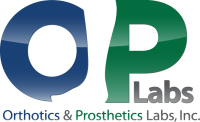Cranial Remodelling Helmets
About Positional Plagiocephaly
Positional plagiocephaly is a disorder in which the back or one side of an infant's head is flattened, often with little hair growing in that area. It's most often the result of babies spending a lot of time lying on their backs or often being in a position where the head is resting against a flat surface (such as in cribs, strollers, swings, and playpens).
Because infants' heads are soft to allow for the incredible brain growth that occurs in the first year of life, they're susceptible to being "molded" into a flat shape.
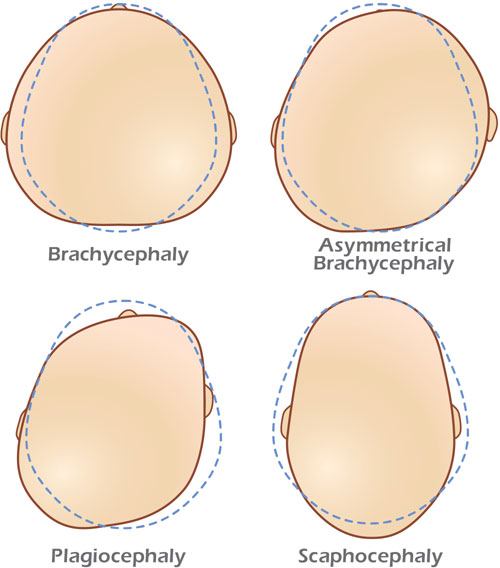
Deformational Plagiocephaly
- The most common type of skull deformity in infants.
- Normally noticed by caregivers at about six to ten weeks of age.
- Characterized by an asymmetrical skull shape.
- Unilateral occipital flattening.
- Ear is positioned more anterior on the side of the occipital flattening.
- Forehead may be asymmetrical and is positioned more anterior on the side of the occipital flattening.
- Facial asymmetry may be present.
- May be accompanied by torticollis, limited neck range of motion, weakness and preferential head positioning.
Deformational Brachycephaly
- Central occipital flattening
- Increased cranial vault height posteriorly. The head is excessively wide for its length.
- May be accompanied by a prominent, bossed forehead.
Deformational Brachycephaly with Asymmetry
- Combination of brachycephalic and plagiocephalic characteristics.
- The shape is disproportionately wide for its length and is also asymmetrical.
- May or may not include asymmetries to the forehead and facial structure.
Deformational Scaphocephaly
- Very elongated head shape that is excessively long for its width.
- May be accompanied by a prominent, bossed forehead.
- Deformational Scaphocephaly caused by extrinsic forces is uncommon although it is sometimes seen in premature infants who are often positioned side lying, such as NICU infants.
- Scaphocephaly caused by extrinsic positioning may be confused with sagittal synostosis, a more serious deformity that usually requires surgery to correct.
Learn more about "tummy time" here.
Cranial Remodeling Orthosis
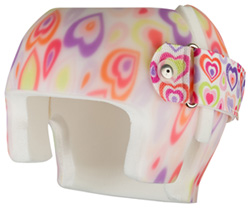
The STARband, Cranial Remolding Orthosis, is part of Orthomerica's STAR Family of Cranial Remolding Orthoses that provides effective management and treatment of a wide variety of head shape abnormalities. Since 2001, infants have been successfully treated with the STARband throughout the United States and around the globe. The STAR Family of Cranial Remolding Orthoses has been used to treat Deformational Plagiocephaly, Brachycephaly and Scaphocephaly in infants 3-18 months. More recently, Orthomerica has received FDA clearance for the STAR Family of Cranial Remolding Orthoses for post-operative Craniosynostosis.
Why It Works
Cranial remolding treatment is only effective if you have adequate control over the areas of bossing (bulging) and allow adequate room for growth in the flattened areas. That being said, it is paramount that the holding areas of the helmet match the exact anatomy of your child to prevent skin complications. Treatment with a STARband begins with an initial laser scan of your baby's head. This enables us to create a custom cranial remolding helmet that is accurate to 0.5mm, ensuring that your child gets the best possible clinical outcome.
Protocol for Treatment
The following guidelines are provided to ensure that the identification of Plagiocephaly and the referral for treatment, are managed to provide optimal results for each patient.
It is recommended that at three months of age, as a standard of practice, each child be evaluated and measured for cranial symmetry. Anthropometric calipers may be used for manual measurement taking.
If it is determined that a cranial asymmetry of 8mm or greater is present, the child needs to be referred to a trained specialist in cranial remolding for treatment, care, and tracking of progress.
How Do We Fix It?
Let Nature Take Her Course – Many cases of abnormal head shape resolve on their own without need of any intervention other than trying to keep your baby from spending too much time in one position. Excessive time spent in a car carrier or being left on their backs in a crib can lead to head shape abnormalities. The best way to compensate for the hours your baby spends on his or her back is to spend some quality "tummy time".
Tummy Time – Provides parents with ideas and activities to make sure your baby gets enough time on his/her tummy throughout the day, while he/she is awake and supervised. These activities include handling, carrying, diapering, positioning, feeding and playing with your baby. Please visit the Library for more detailed information.
STARband – A baby fortunate enough to be fitted with a STARband in the optimum age range will wear the helmet 23 hours a day and will gently guide the baby’s head into a more normal shape. Please consult with your Physician and/or Orthotist for more detailed information.
Transfer Options
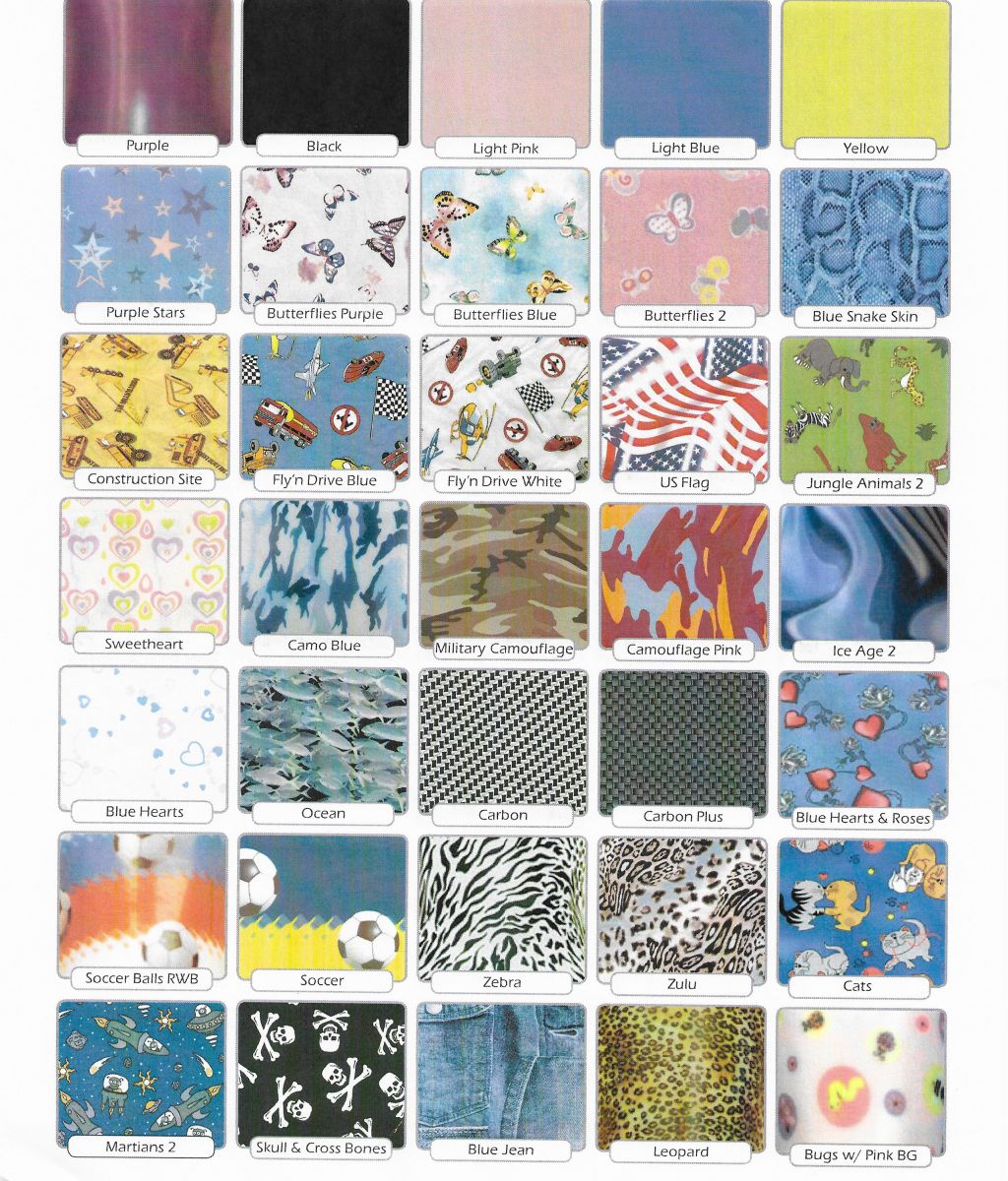
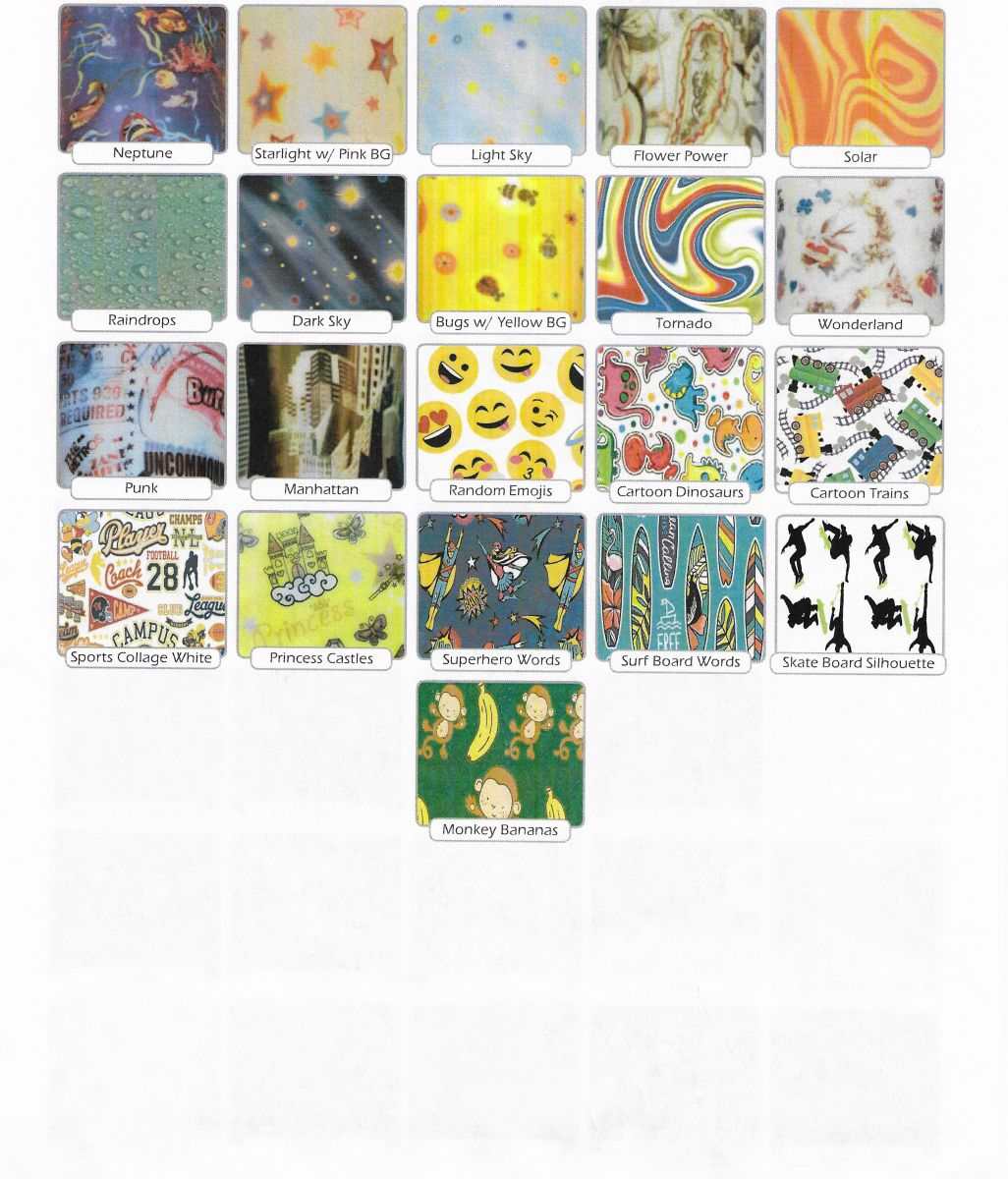
Wear & Care
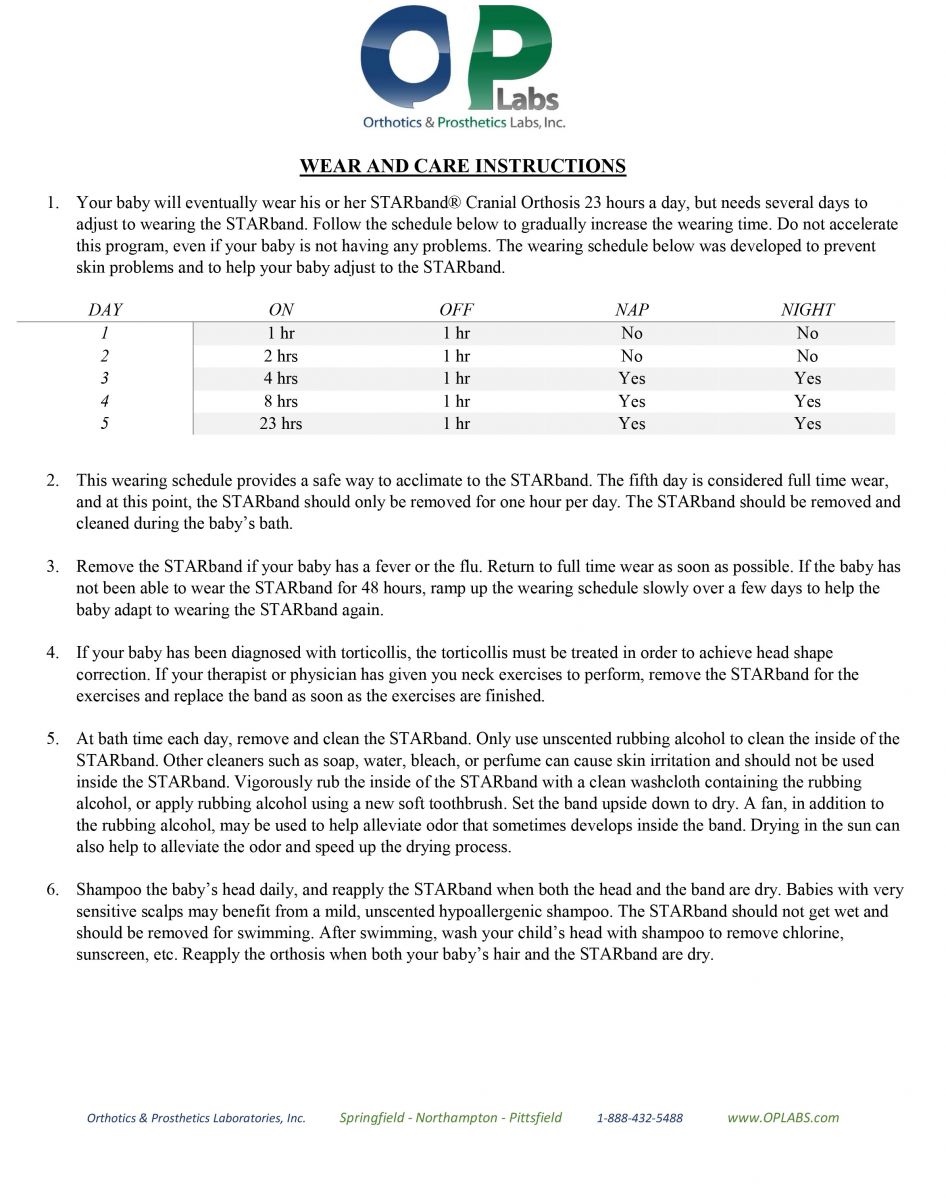
WEAR AND CARE INSTRUCTIONS (continued)
2. For the first several days, your baby may perspire excessively until his or her body becomes accustomed to the STARband. This is normal, and during this time, the STARband can be removed for a couple minutes throughout the day to dry the baby’s head and band with a towel or cool hair dryer. The STARband should be reapplied as soon as the baby’s hair and the band are dry. Do not use powders, lotions, or wipes on the baby’s head or inside the STARband. These products may contain perfumes and ingredients that can lead to skin irritation. Dress your baby in cooler clothing if the baby perspires excessively.
3. If the baby develops a rash, consult your Doctor immediately. Also, keep the baby as cool as possible, and towel or blow dry the baby’s hair and the inside of the band throughout the day with a cool hair dryer to prevent moisture buildup. Replace the STARband as soon as the band and hair are dry. Time out of the band should be less than 10 minutes.
4. If you need to cut your baby’s hair during STARband® Cranial Orthosis treatment, do not shave the entire head. The contact of the band against the head may cause irritation when the hair starts to grow back in and the baby may develop skin irritation. Try to keep your baby’s hair the same length throughout treatment to prevent fitting problems that may result from a decrease or increase in the amount of hair.
5. Skin checks should be performed every time the STARband is removed. Call your practitioner immediately if there is an area of deep redness that does not fade in one hour after removing the band. This may indicate a need for an adjustment. If there is any skin breakdown, remove the band and contact your Doctor. The STARband should not be worn until the skin is healed.
6. Excessive time out of the STARband (more than 48 hours) may create problems with the fit of the STARband since the baby’s head is growing continuously. Limit the time out of the STARband, and seek assistance when something prevents your baby from tolerating or wearing the band.
7. Each time you place the STARband on the baby’s head, check the chafe, strap, and stop gap foam insert to make sure they are secure. Loose parts can be a choking hazard and can result in asphyxiation if the parts are swallowed.
8. When the STARband is off your baby’s head, keep the STARband away from family pets. Dogs have been known to chew the plastic and foam liner.
9. The STARband must be worn as prescribed, 23 hours a day, to constrain further abnormal growth and encourage growth in the correct locations. Even at the end of treatment, the band should be worn 23 hours a day until the physician, practitioner and caregiver agree that treatment is complete.
a. Early discontinuation of treatment against medical advice may result in incomplete correction of the head shape.
b. Continued use of the STARband against medical advice may restrict skull growth and may impair brain growth and development.
10. Explain the purpose of the STARband to other caregivers, and train them in the proper application, removal, and wearing schedule. Training is important for family, friends, daycare personnel, and any other person taking caring of your baby.
11. If you have questions or concerns about your baby’s care, contact your practitioner so that any issues can be resolved quickly.
Orthotics & Prosthetics Laboratories, Inc. Springfield - Northampton - Pittsfield 1-888-432-5488 www.OPLABS.com
